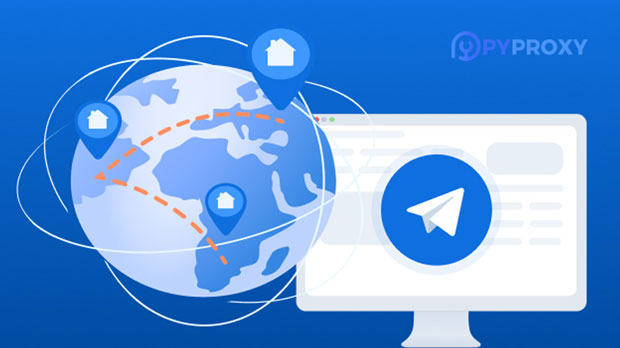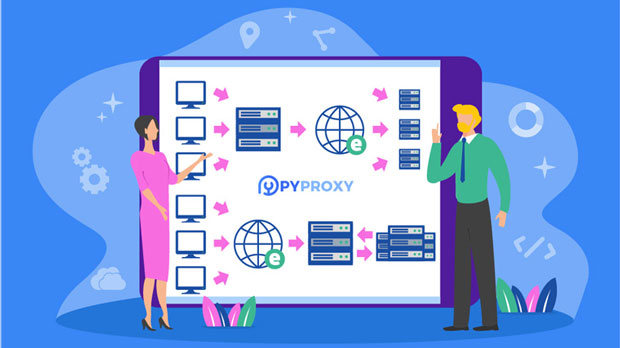How to configure SOCKS5 proxy vs. HTTP proxy and what is the difference in effect?
In today’s internet-driven world, proxies play a crucial role in ensuring privacy, security, and access to restricted content. Two of the most commonly used types of proxies are SOCKS5 and HTTP proxies. While both act as intermediaries between a user's device and the web, they function in different ways and have distinct configurations. This article will provide a comprehensive guide on how to configure SOCKS5 and HTTP proxies, as well as analyze the key differences in their effects. Understanding these differences will help users choose the right proxy based on their specific needs, whether for browsing anonymity, security, or bypassing geographical restrictions. Understanding the Basics of SOCKS5 and HTTP ProxiesTo start, it is important to understand the fundamental differences between SOCKS5 and HTTP proxies. Both proxies are used to reroute internet traffic through an intermediary server, but they differ in terms of the protocols they use, the level of anonymity they offer, and the types of applications they support. socks5 proxy: SOCKS5 is a versatile and powerful proxy protocol that can handle any type of internet traffic, including HTTP, FTP, POP3, and even peer-to-peer (P2P) protocols like BitTorrent. socks5 proxies do not interpret the traffic at the application layer, which means they simply forward the data to the destination server, making them more flexible and capable of bypassing restrictions more effectively than HTTP proxies. Additionally, SOCKS5 supports authentication, which adds a layer of security to the connection.HTTP Proxy: HTTP proxies, on the other hand, are specifically designed to handle HTTP and HTTPS traffic. These proxies are more limited than SOCKS5, as they are only effective for web browsing. An HTTP proxy acts as an intermediary between the client and the web server, receiving HTTP requests from the client, forwarding them to the destination, and then sending the responses back. While HTTP proxies can effectively hide the user's IP address for web browsing, they do not provide the same level of anonymity and flexibility as SOCKS5.How to Configure SOCKS5 ProxyConfiguring a SOCKS5 proxy generally requires a few steps depending on the device or application you are using. Below is a general guide for configuring SOCKS5 proxies on various platforms.For Web Browsers (like Firefox or Chrome):1. Open the settings menu of the browser and locate the network or proxy settings section.2. Select the option to configure the proxy manually.3. Enter the SOCKS5 server’s IP address and port number.4. If required, input authentication details (username and password).5. Make sure to choose SOCKS5 as the proxy protocol in the configuration options.6. Save the changes and restart the browser for the settings to take effect.For System-wide Configuration (Windows/macOS/Linux):1. On Windows, navigate to the “Network and Internet” settings, then open the “Proxy” settings.2. Enable the “Manual proxy setup” option and input the socks5 proxy server’s IP address and port number.3. On macOS, go to “System Preferences,” select “Network,” and configure the proxy settings under the “Advanced” section.4. For Linux, configuration can vary depending on the distribution, but generally, proxy settings can be adjusted through the system's network settings.Once configured, all internet traffic on the device will route through the SOCKS5 proxy.How to Configure HTTP ProxyConfiguring an HTTP proxy is simpler than SOCKS5, as it is mainly used for web browsing. The configuration steps vary based on the application or browser you are using.For Web Browsers:1. Go to the browser’s settings menu and navigate to the proxy or network settings.2. Enable manual proxy configuration and enter the HTTP proxy server’s IP address and port number.3. For HTTPS traffic, ensure the browser is configured to use the HTTPS proxy as well.4. Save the settings and restart the browser to begin using the proxy.For System-wide Configuration (Windows/macOS/Linux):1. In Windows, access the "Network and Internet" section and enter the HTTP proxy details in the "Manual proxy setup."2. For macOS, adjust the HTTP proxy settings under the “Network” section in “System Preferences.”3. Linux users can typically configure the HTTP proxy through the network settings in their system’s control panel or via terminal commands.Once set up, the device will route HTTP and HTTPS traffic through the HTTP proxy server.Key Differences in Effects: SOCKS5 vs. HTTP ProxyWhile both SOCKS5 and HTTP proxies offer the ability to mask the user's real IP address, they differ significantly in terms of functionality, performance, and the level of security they provide.1. Versatility and Supported Protocols: SOCKS5 proxies are far more versatile than HTTP proxies. They support a broader range of protocols, including FTP, SMTP, POP3, and even P2P traffic. This makes SOCKS5 a better choice for users who need to route traffic for applications beyond just web browsing, such as email clients or torrenting software. In contrast, HTTP proxies only work with web traffic, limiting their use cases.2. Anonymity and Security: SOCKS5 proxies are often considered more secure than HTTP proxies. Because SOCKS5 operates at a lower layer in the OSI model (the transport layer), it doesn’t interpret the data being sent and doesn’t modify the traffic. This lack of interference results in greater privacy and security, especially for activities like file sharing or using encryption protocols. HTTP proxies, however, might expose some information about the user's browsing activity or may be more susceptible to blocking by websites.3. Speed and Performance: SOCKS5 proxies typically offer better performance and speed than HTTP proxies. This is because SOCKS5 proxies generally cause less overhead by not inspecting the data. HTTP proxies, on the other hand, may introduce latency due to the additional layer of processing at the application level.4. Application Compatibility: SOCKS5 proxies are compatible with a wider range of applications compared to HTTP proxies, which are limited to web browsing. For users looking to route traffic for applications like email, FTP, or P2P downloads, SOCKS5 is the better choice. However, if the goal is simply to browse the web anonymously, an HTTP proxy may suffice.ConclusionBoth SOCKS5 and HTTP proxies serve the purpose of routing internet traffic through an intermediary server, but they do so in different ways. SOCKS5 proxies offer greater flexibility, support for multiple protocols, enhanced security, and better performance. They are ideal for users looking for a versatile proxy solution that supports a wide range of applications. In contrast, HTTP proxies are easier to configure and work best for users who only need to anonymize their web browsing activities.The choice between SOCKS5 and HTTP proxies depends largely on your specific needs. If you require a proxy for more than just web browsing or need to bypass strict content filters, SOCKS5 is likely the best option. However, for users who only need to hide their browsing activity, an HTTP proxy may provide a simpler, more straightforward solution.Ultimately, understanding the differences in configuration, functionality, and security between SOCKS5 and HTTP proxies is key to making an informed decision about which proxy type best meets your requirements.
2024-12-26

























































